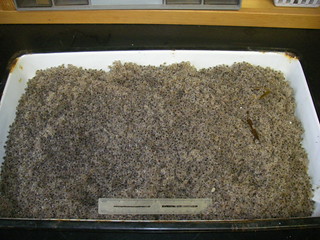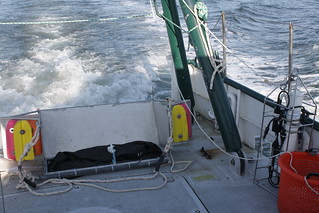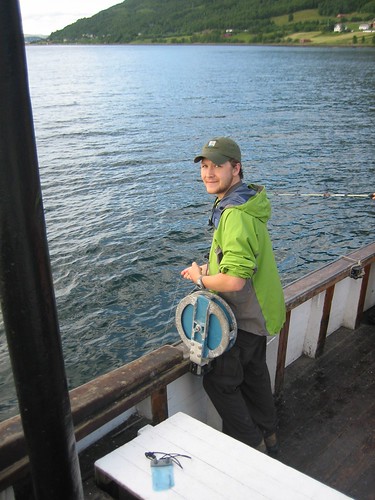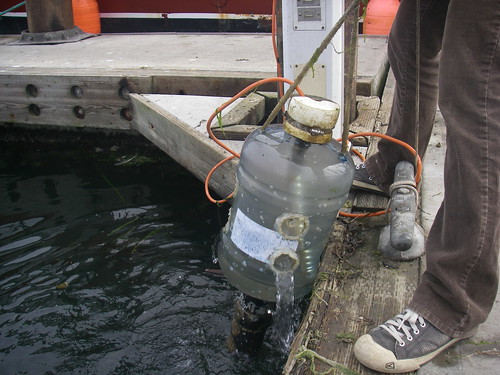This last term I took Comparative Embryology and Larval Biology taught by Dr. Maslakova at OIMB. In the course we had the rare opportunity to witness first hand the development of many phyla of marine invertebrates. We also maintained our own cultures of larvae changing their water and feeding them every other day. The experience of watching the organisms develop right before our very eyes was one I will never forget. The class was very informative and I learned a lot about the development of many species. One of the assignments in the class was to photograph the larva or embryo of an organism and write a brief blurb for the course blog. I posted about crab zoea, barnacle nauplii and a polychaete called Polygordius. I highly recommend that folks check out this blog and get a feel for what the larvae of many organisms look like.
In my advisors previous research he found a correlation between the date of the year of the spring transition and the amount of megalopae returning. Our hypothesis is that upwelling that occurs following the spring transition brings the megalopae onto the shelf. My goal was to conduct a research cruise the week before the spring transition and a cruise the week after the spring transition to see if the number of megalopae on the shelf increased. Surface plankton samples and CTD casts were conducted on a 10 km transect perpendicular to shore. We used a manta net (pictured to the left) to collect surface plankton tows. The net works by skimming across the surface of the water collecting a sample just from the top fraction of water.
 We conducted the tows at night and in the surface because previous research has found that the megalopae of Dungeness crabs inhabit the surface of the water column at night. After deploying the net we towed it behind the boat for 10 minutes (picture to the right). The cruise before the spring transition was rough and we had wind gusts to 45 knots. The entire crew did great and nobody got sea sick!!! The weather during the cruise the week after the spring transition was much calmer and was rather enjoyable. We caught many interesting organisms such as salps and doliolids. The night we were out there was a great sunset and we all had the opportunity to watch it. I am still in the process of analyzing the samples but will post again with the results later.
We conducted the tows at night and in the surface because previous research has found that the megalopae of Dungeness crabs inhabit the surface of the water column at night. After deploying the net we towed it behind the boat for 10 minutes (picture to the right). The cruise before the spring transition was rough and we had wind gusts to 45 knots. The entire crew did great and nobody got sea sick!!! The weather during the cruise the week after the spring transition was much calmer and was rather enjoyable. We caught many interesting organisms such as salps and doliolids. The night we were out there was a great sunset and we all had the opportunity to watch it. I am still in the process of analyzing the samples but will post again with the results later.
 On April 2nd I put out our light trap to monitor recruitment of megalopae and I have been checking it daily. The photo to the left is of a sample collected on May 28th. In the photo are approximately 60,000 megalopae that had climbed into the trap during the course of the night. The recruitment events are highly pulsed and catch has ranged from 60,000 animals in a night to 0 animals in a night.
On April 2nd I put out our light trap to monitor recruitment of megalopae and I have been checking it daily. The photo to the left is of a sample collected on May 28th. In the photo are approximately 60,000 megalopae that had climbed into the trap during the course of the night. The recruitment events are highly pulsed and catch has ranged from 60,000 animals in a night to 0 animals in a night.



